
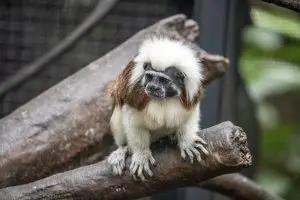
Cotton-top tamarins are critically endangered with fewer than 2,000 of them left in their natural range.
While exploring our Zoo, you may have visited many of our animals whose species are considered endangered, including our Eastern bongos, cotton-top tamarins and scimitar-horned oryx. Then, you might have wondered to yourself, “How does an animal receive the endangered label?”
Well, we’re here to tell you! As an Association of Zoos and Aquariums (AZA)-accredited organization, we want to make sure our guests understand the reality many species face in their natural ranges and our role in helping them.
The conservation status of any given animal is determined by what’s known as The International Union for Conservation of Nature’s Red List of Threatened Species (IUCN Red List), the world’s most expansive and credible source for understanding whether a species exists and how close the group may be to extinction.
The IUCN Red List can be broken down into nine categories: Not Evaluated, Data Deficient, Least Concern, Near Threatened, Vulnerable, Endangered, Critically Endangered, Extinct in the Wild and Extinct. “Endangered” species are species that are at risk of becoming extinct, while “threatened” species are at risk of becoming endangered.
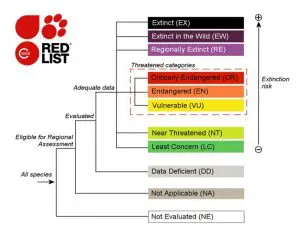
An overview of the IUCN Red List’s categories for determining a species’ conservation status (source: The IUCN Red List Categories and Criteria)
Though not every species in existence has been officially assessed (yet), the IUCN Red List leads conservation efforts and decisions by providing insight into a species’ biggest threats, whether the species is protected by law, its population size and more.
Out of all species which have been assessed, a whopping 28% of species are threatened with extinction—that’s why conservation professionals like us are here to help.
As we shared in a previous blog, AZA-accredited zoos participate in programs like the AZA Species Survival Plan (SSP) program and the AZA Saving Animals from Extinction (SAFE) program to help restore and protect animal populations.
The SSP program practices ex situ conservation, meaning its efforts remain within conservation organizations like zoos. AZA uses these plans to pair genetically matched animals in accredited facilities together, ensuring we bolster and safeguard these species from extinction.
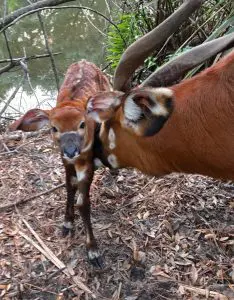
Our Eastern bongos participate in their critically endangered species’ SSP to boost their ex situ population. Here’s our resident bongo, Amara, and her newborn calf.
While AZA recognizes the importance of genetically stable populations inside its accredited organizations, there was still a need to develop programs which safeguard species in their native range.
SAFE practices in situ conservation, meaning its efforts are focused on field conservation efforts outside of zoos, including the funding of field organizations or developing marketing and education tactics specific to a species and its native region. Additionally, SAFE programs call for collaboration among accredited organizations, encouraging us to share our expertise and conservation practices with one another.
Take our Perdido Key beach mice, for example. These little mice are a keystone species critical for supporting the health of our beaches.
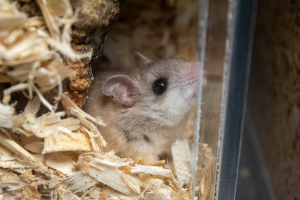
This year, we welcomed seven babies resulting from our Perdido Key beach mice breeding program.
Over the years, we’ve successfully paired beach mice together and have even reintroduced mice back to their natural habitat when the population in their natural range was threatened.
Programs like AZA’s SSP and SAFE serve different purposes, but together, they expand the work of the IUCN Red List to implement concrete, long-term changes.
And we know they’re working, too.
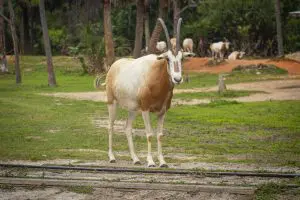
Our Zoo’s oryx family of four teach our guests the importance of preserving this fascinating African species.
In 1991, scimitar-horned oryx were deemed extinct in the wild, meaning there were none left in their natural range. But with the combined efforts from several other AZA-accredited and international facilities, oryx populations were rebuilt enough to be reintroduced back to protected spaces in their native habitat. Finally, after years of hard work, the species was reclassified from “extinct in the wild” to “endangered!”
It’s collaborative efforts like these that revitalize dying populations and protect the beautiful species that call our planet home. To learn more about endangered species and the work we do to help them, consider attending our Lights On: A Nighttime Art Experience event running from November through January.
During this exclusive experience, we invite you to explore the moving stories of vulnerable, threatened and endangered species through an immersive art experience.